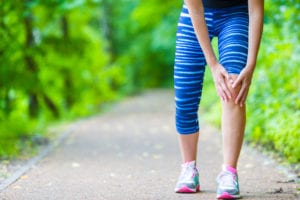Written by Joyce Smith, BS. A novel bioavailable blend of curcuminoids in a turmeric matrix significantly improved symptoms and biomarkers of rheumatoid arthritis in participating subjects.
 Rheumatoid arthritis (RA), with an estimated prevalence of 40 to 100 million people worldwide 1, affects women 2-3 times more frequently than men, with a lifetime risk for women of 3.6% and 1.7% for men 1. In vitro and in vivo studies have demonstrated curcumin’s antioxidant, antineoplastic, antimicrobial, antiarthritic, antiamyloid, and anti-inflammatory properties 2,3. Curcumin’s poor intestinal absorption and limited systemic bioavailability 4,5 has sparked an intense effort to find more effective delivery systems and while nanoparticles and lyposomes and others have shown promise, search for increased water solubility and better intestinal absorption and bioavailability continues.
Rheumatoid arthritis (RA), with an estimated prevalence of 40 to 100 million people worldwide 1, affects women 2-3 times more frequently than men, with a lifetime risk for women of 3.6% and 1.7% for men 1. In vitro and in vivo studies have demonstrated curcumin’s antioxidant, antineoplastic, antimicrobial, antiarthritic, antiamyloid, and anti-inflammatory properties 2,3. Curcumin’s poor intestinal absorption and limited systemic bioavailability 4,5 has sparked an intense effort to find more effective delivery systems and while nanoparticles and lyposomes and others have shown promise, search for increased water solubility and better intestinal absorption and bioavailability continues.
The present randomized, double-blind, three-arm pilot study 6, conducted in India, was designed to compare the efficacy and safety of two different doses of a novel highly bioavailable curcumin in a turmeric matrix formulation (Acumin™) with placebo in patients with active RA. Thirty-six patients were randomized in a 1:1:1 ratio to receive 250mg of Acumin™ as the low-dose curcumin, 500 mg as the high-dose curcumin, and placebo (500mg of food grade starch) to be taken as one capsule (twice daily) 30 minutes after meals for a 3-month period. Assessed study parameters included total cholesterol, random serum glucose, creatine, sodium, potassium, urea, total bilirubin, total protein, albumin, alkaline phosphatase, C-reactive protein (CRP), erythrocyte sedimentation rate (ESR), rheumatoid factor (RF), disease activity score 28 (DAS28), visual analog scale (VAS), American College of Rheumatology 20 (ACR20), total swollen joints, and total tender joints.
There were no significant changes from day one to end of treatment or intergroup changes between the 3 treatments groups with respect to the following measures: height, weight, body mass index, total cholesterol, random glucose, creatine, sodium, potassium, urea, total bilirubin, total protein, albumin, and alkaline phosphatase.
Compared to baseline values, the following statistically significant changes were seen:
- VAS improved in all three groups: low-dose, 62.5%; high-dose, 72.3%; placebo, 3.5%
- DAS-28 improved in low-dose (52.6%) and high-dose (66%) groups but was unchanged in placebo group
- ESR decreased in each group: low-dose, 88.1%; high-dose, 88.6%; placebo, 29.6%
- CRP decreased in each group: low-dose, 29.9%; high-dose, 51.2%; placebo, 11.3%
- RF decreased in each group: low-dose, 80.2%; high-dose, 84.2%; placebo, 13.1%
- ACR20 scores decreased in the low-dose (70.3%) and high-dose (75.7%) groups but was unchanged in the placebo group
- Total joint swelling decreased in each group: low-dose, 80.4%; high-dose, 84.8%; placebo, 3.7%
- Total joint tenderness decreased in each group: low-dose, 78.1%; high-dose, 88.0%; placebo, 4.4%
Compared to placebo, assessed improvements and inflammatory marker reductions were all statistically significant for both high- and low-dose treatment groups (P≤0.001) with the exception of the low dose Acumin™ for total joint pain [P≤0.01]). While the high-dose group experienced greater biomarker changes compared to the low-dose group, the assessed changes were not significantly greater. Both doses of Acumin™ were well tolerated and without side effects.
Source: Amalraj, Augustine, Karthik Varma, Joby Jacob, Chandradhara Divya, Ajaikumar B. Kunnumakkara, Sidney J. Stohs, and Sreeraj Gopi. “A novel highly bioavailable curcumin formulation improves symptoms and diagnostic indicators in rheumatoid arthritis patients: A randomized, double-blind, placebo-controlled, two-dose, three-arm, and parallel-group study.” Journal of medicinal food 20, no. 10 (2017): 1022-1030.
© Mary Ann Liebert, Inc., and Korean Society of Food Science and Nutrition
Posted December 9, 2019.
Joyce Smith, BS, is a degreed laboratory technologist. She received her bachelor of arts with a major in Chemistry and a minor in Biology from the University of Saskatchewan and her internship through the University of Saskatchewan College of Medicine and the Royal University Hospital in Saskatoon, Saskatchewan. She currently resides in Bloomingdale, IL.
References:
- Viatte S, Plant D, Raychaudhuri S. Genetics and epigenetics of rheumatoid arthritis. Nature Reviews Rheumatology. 2013;9(3):141.
- Amalraj A, Pius A, Gopi S, Gopi S. Biological activities of curcuminoids, other biomolecules from turmeric and their derivatives–A review. Journal of traditional and complementary medicine. 2017;7(2):205-233.
- Zorofchian Moghadamtousi S, Abdul Kadir H, Hassandarvish P, Tajik H, Abubakar S, Zandi K. A review on antibacterial, antiviral, and antifungal activity of curcumin. BioMed research international. 2014;2014.
- Shakibaei M, Mobasheri A, Buhrmann C. Curcumin synergizes with resveratrol to stimulate the MAPK signaling pathway in human articular chondrocytes in vitro. Genes & nutrition. 2011;6(2):171.
- Douglass BJ, Clouatre DL. Beyond yellow curry: assessing commercial curcumin absorption technologies. Journal of the American College of Nutrition. 2015;34(4):347-358.
- Amalraj A, Varma K, Jacob J, et al. A novel highly bioavailable curcumin formulation improves symptoms and diagnostic indicators in rheumatoid arthritis patients: A randomized, double-blind, placebo-controlled, two-dose, three-arm, and parallel-group study. Journal of medicinal food. 2017;20(10):1022-1030.
- Shakibaei M, Mobasher A, Buhrmann C: Curcumin synergizes with resveratrol to stimulate the MAPK signaling pathway in human articular chondrocytes in vitro. Genes Nutr 2011;6:171–179.
- Douglass BJ, Clouatre DL: Beyond yellow curry: Assessing commercial curcumin absorption technologies. J Am Coll Nutr 2015;34:347–358.
